Night lab
Night Lab is an initiative of Studio Monnik to raise awareness about the vanished darkness over urban areas and the over-illumination of our cities. We looked at the dark city with a diverse team of designers and researchers. A city without light pollution, where the rhythms of our planet are not denied but embraced, and where the Milky Way can be seen again above the urban skyline.
Various nightly light phenomena and urban activities have been studied in the Night Lab. The aim was to experience urban nightlife (looking at the behavior of humans and nocturnal animals) and night light (both artificial light and natural darkness), engaging in stories from experts while looking for the design assignments of the urban nights.
During a nightly walk through Rotterdam, from sunset to sunrise, from west to east, we saw different layers of light: for traffic and social safety, at sports fields and events, at homes and in places of work. All these reasons for illuminating our environment form layers of light. They amplify each other and sometimes try to overpower each other out. After all, in a brightly lit environment even more light is needed to highlight.












Are light and dark like noise and silence? Is darkness a monumental or scenic quality? And who actually owns the dark? In the Night Lab we investigated which instruments, laws and regulations of urban development could turn the dark city into reality.
If we see the darkness as valuable, and we want to experience and preserve it, how do we do that? Environmental legislation already has some interesting principles that can help create darkness. For example, by starting at the source: take measures that reduce light production. Or by protecting vulnerable objects: create a physical barrier between a source of light and that which experiences nuisance. In addition, it is possible to minimize the effects on the receiver: take measures where light pollution is experienced.
These principles can be applied physically. But when is a principle applied? Is the prevention of light pollution a legal obligation or is it a right to be protected against light nuisance? Is it a precondition for development? Or is darkness a luxury some people can afford? Here the question arises: who owns darkness and who controls it?
The axes presented below form the basis for further exploration of the above questions. One axis stretches between collective and individual: Is darkness an experience that people go through together or alone? The other axis contrasts darkness as a right with darkness as luxury. If darkness is a right, it is enforced by legislation with physical implications for the living environment. If darkness is a luxury it must be created through physical intervention. The corners in the axial cross form four scenarios imagining a city that nurtures darkness. The physical impact of each scenario is shown with an illustration at a specific location along the route of our nightly walk through Rotterdam.

Star gazer

Darkness as private luxury
From time to time you just want to disconnect from your permanently illuminated technology-driven surroundings. How does one pierce through the augmented layer of urban light, even briefly? A reflective place with a view of the starry sky in its full glory allows you to unplug the always-on mind. And create a moment for some “me-time”.
Stargazers on the Kralingse Plas
The capital villas of Kralingen are illuminated every single night. This excess of light contributes to a sense of safety. Daylight conditions around-the-clock, inside and outside, provide clear views for watchful security cameras. Lighting also serves to show off: Look at our magnificent mansion, we don’t have to cut back on energy costs. However, the wealthy residents of Kralingen need their nightly darkness too. If money is not a concern, you can have both light and darkness: Your backyard houses a private stargazer, several hunderd of meters tall. This structures pierces through the clouds, through sky glow caused by the city and surrounding greenhouses. Directly accessible from the comforts of your own house, it offers a private view of your piece of starry sky.
Dark festival

Darkness as a collective experience
At The Festival of Darkness we experience darkness in a collective ritual. The more souls, the more darkness. The more the merrier. Together we behold the starry night. Within an artificial celestial dome our minds are conditioned to collectively revolt against the conformism of the enlighted city. Once outside, on our way home, street lighting, illuminated signages and light boxes pay the price. We want to be free again!
Ferrodome as Cenotaph of the Night
The Ferrodome building, now an event space of industrial heritage in the Merwe-Vierhavens harbor district, is transformed into the ultimate collective experience of darkness. The experience starts at the entrance of the Ferrodome’s annexes. Gradually the spectrum of light shifts. Room by room, visitors grow accustomed to darkness. The closer to the massive hall, the darker it becomes to allow for an optimal experience. The current cylindrical building has been perfected into a sphere by excavating a part and adding a dome. Here the starry sky of the past reveals itself, projected onto the dome. In the midst of illuminated cranes, ships and trucks in the still-bustling fruit port, visitors collectively experience the view of a virtual starry sky. The contrast with today’s night sky could not be greater.
Dark reserve

Darkness as shared interest
Society has to be protected against the unhealthy effects of excessive light use in our environment. Areas of high ecological, cultural or historical value will be designated to have low-light conditions. In these areas it will be dark, unless …
Conservation of the river Rotte
The river Rotte deserves protection against excessive lighting for several reasons. It is a distinguished cityscape, an important ecological artery through the city and a recreational route. From the river outwards, lighting must maintain appropriate distances in order to minimize impacts on the societal values of the Rotte. Analogous – but opposite – to the setbacks in zoning ordinances, inverted pyramids show where light is not allowed.
Dark room

Darkness as private right
Every citizen deserves a light-free environment. In the existing built environment, this requires customized solutions. Nowadays various innovative products are available through numerous parties affiliated with and certified by the national platform. Homeowners, homeowners associations, housing corporations and tenants may be eligible for a contribution towards the costs of these measures. Your local government facilitates this process via the well-known online environment, as long as you take action yourself.
Customization at the Zwaanshals
The Zwaanshals is a busy and much frequented city street. This liveliness unfortunately also translates into a brightly lit street scene. Street lighting, headlamps for cars and bikes, illuminated advertising and shop windows provide a cacophony of light. To give each individual resident a certain amount of darkness, custom-made solutions are offered at building scale. Vantablack paint on buildings ensures an absorption of light where it touches facades. Shades on street lamps, curtains and shutters reduce irradiation into homes.

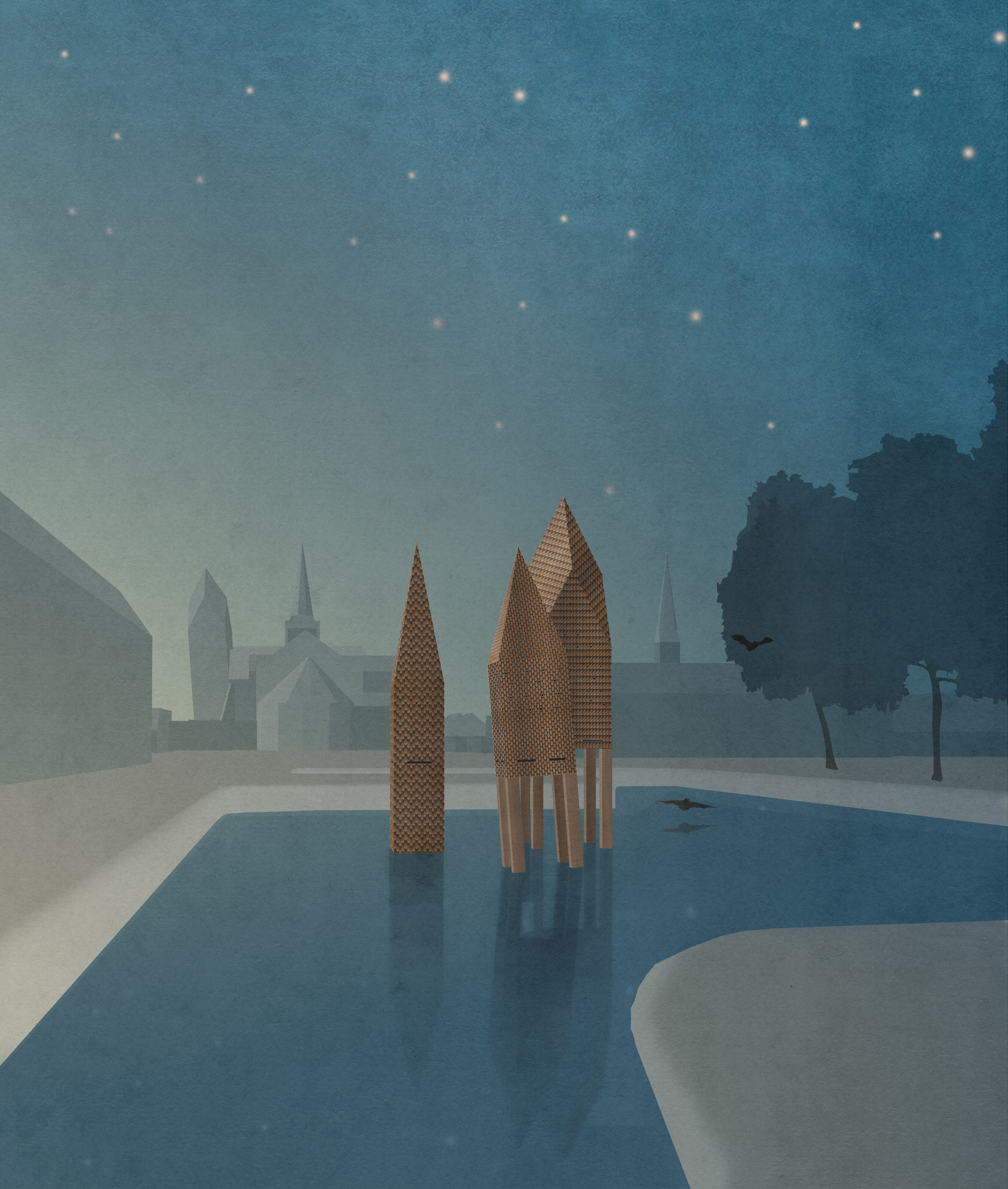 Fauna towers
Fauna towers
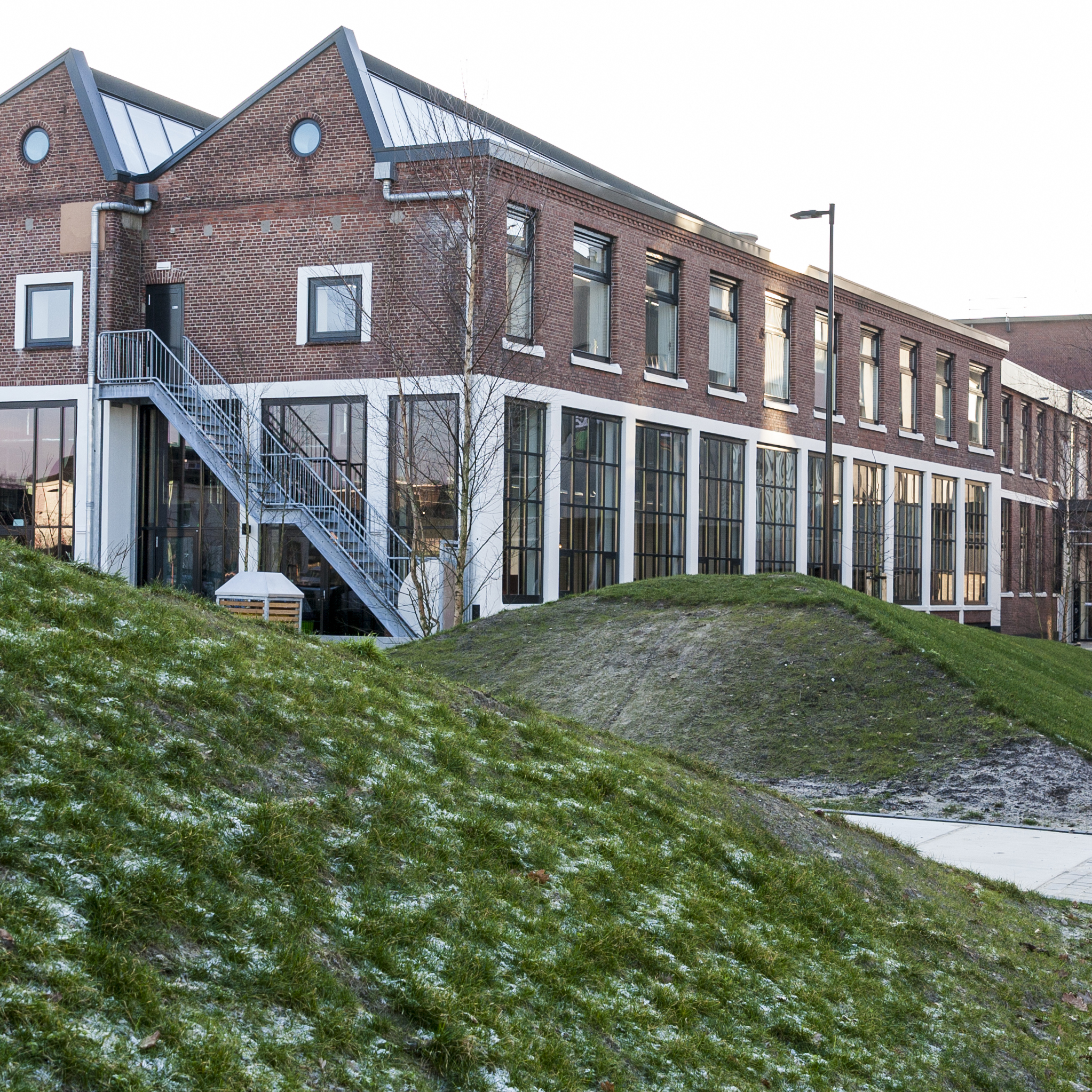 Polaroid Performance Factory
Polaroid Performance Factory
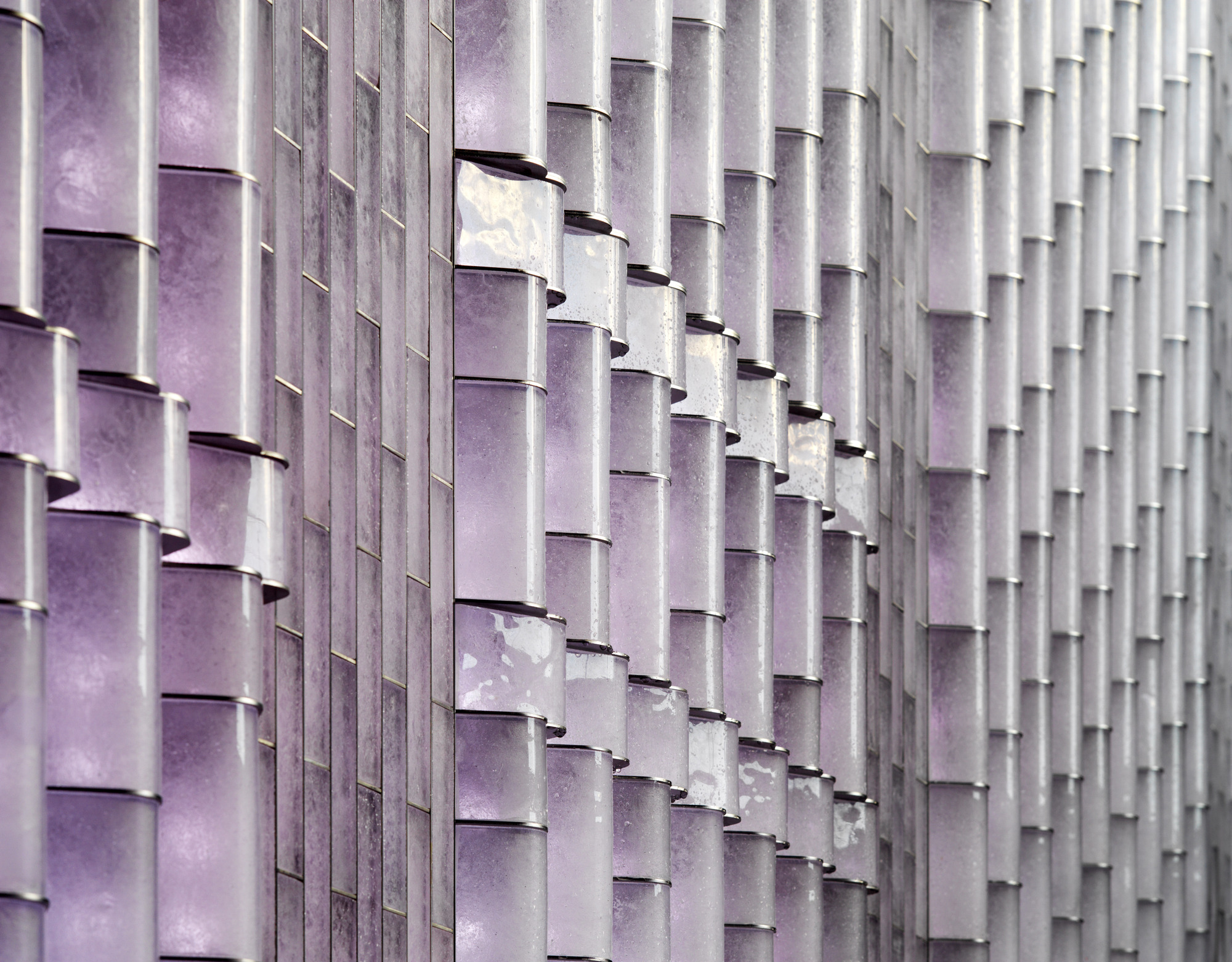 Willem II Passage
Willem II Passage
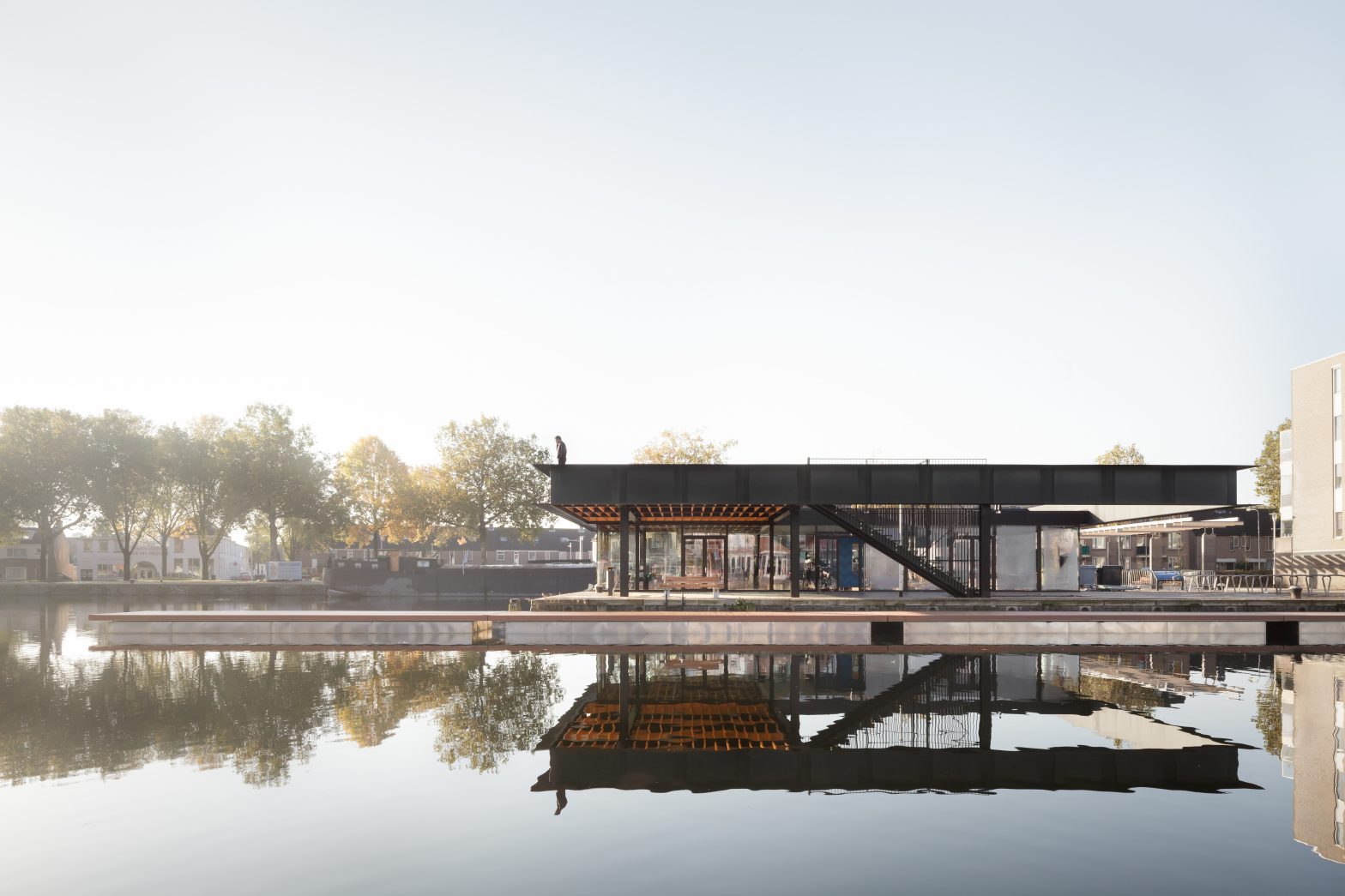 Piushaven Pavilion
Piushaven Pavilion
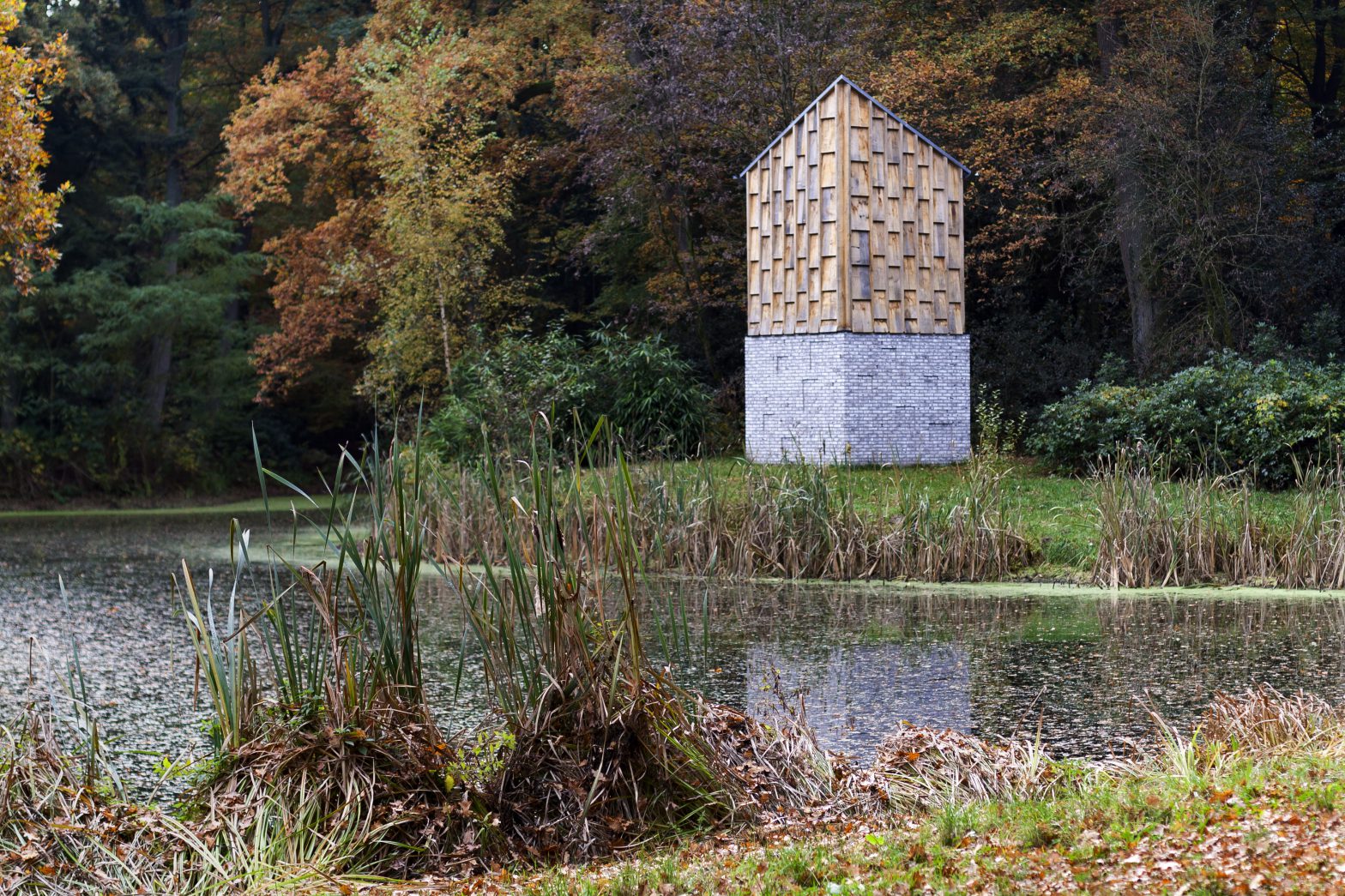 Bat House Teesinkbos
Bat House Teesinkbos